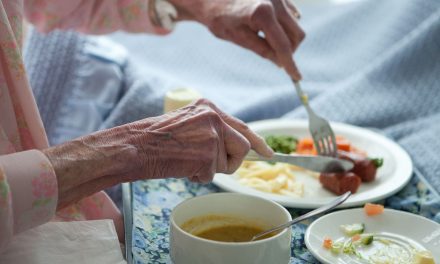Whether it’s the allure of whipping up your own delicious meals, saving money, or simply mastering the art of cooking, learning how to cook is one of the most rewarding skills you can develop. But let’s face it: starting from scratch can feel pretty overwhelming.
Don’t worry, we’ve got your back. Here’s your beginner’s guide to getting into cooking, with practical tips to help you feel confident in the kitchen.
Start With the Basics: Get Comfortable in the Kitchen
The kitchen can be an intimidating place if you’ve never spent much time in one, so the first step is to get comfortable with your space. Get to know your kitchen tools, equipment, as well as food safety. Understanding where everything is and how to use it will eliminate much of the uncertainty when you’re cooking.
What you’ll need to get started:
A set of knives
A good chef’s knife is essential for most tasks, but a paring knife is handy too. You don’t need an expensive set—just something sharp and functional.
Chopping board
A sturdy, large board (preferably one that’s easy to clean) is key.
Cookware
A non-stick frypan, a medium-sized saucepan, and a large pot should be enough to begin with.
Measuring spoons and cups
Essential for following recipes accurately.
Mixing bowls and utensils
Get a few basic bowls, a spatula, tongs, and a whisk.
Once you have all the things you need, organise your kitchen in a way that feels intuitive and works best for you. The less you’re rummaging around for things, the smoother your cooking experience will be.
Learn Some Basic Cooking Techniques
Before diving into complicated recipes, start by mastering some basic cooking techniques that will form the foundation for most dishes. Once you’re comfortable with these techniques, you can start experimenting with more complex methods as your confidence builds.
Chopping and slicing
It’s not about speed, it’s about technique. Learn how to safely hold your knife and chop onions, garlic, and veggies like a pro.
Sautéing
This simple cooking method involves cooking food quickly in a hot pan with a bit of oil or butter. It’s perfect for veggies, proteins, and aromatics.
Boiling and steaming
Mastering how to cook pasta, rice, and vegetables is a must. You can’t go wrong with these fundamental methods.
Roasting
A game-changer, especially for vegetables, meats, and even fruits. Roasting caramelises natural sugars and brings out incredible flavours.
Start Simple: Focus on One-Pot Meals and Basic Recipes
If you’re new to cooking, it’s easy to get discouraged by recipes that are too complex. The best way to start is by keeping things simple. One-pot meals are a great place to begin. Throw everything in the pot, let it cook, and you’re done. Think hearty stews, pasta dishes, soups, and risottos. Don’t be afraid to stick to recipes that use fewer ingredients. The goal is to build your confidence, not overwhelm yourself with too much at once.
Ideas to get started:
Aussie Meat Pie
Easy to make using pre-made pastry and mince. This classic comfort food is a winner for beginners.
Vegetable Stir-Fry
A quick, healthy meal that’s perfect for any veggie combination. Pair it with rice or noodles, and you’ve got dinner sorted.
Spaghetti Bolognese
A classic that’s impossible to get wrong. Plus, it’s easy to make in large batches and freeze for later.
Invest in Quality Ingredients
While it might be tempting to fill your pantry with processed foods and ready-to-go meals, real cooking often comes down to using fresh, quality ingredients. Don’t worry, you don’t need to buy everything in bulk at once. Start with what’s necessary and build from there.
Essential pantry staples include:
Olive oil
For sautéing, roasting, and drizzling over dishes.
Salt and pepper
Simple seasonings that elevate any dish.
Herbs and spices
Try to build a small collection of dried herbs (like oregano, thyme, and basil) and spices (such as cumin, paprika, and cinnamon).
Canned goods
Tomatoes, beans, and coconut milk are great for base sauces and soups.
Buying fresh produce is always best when you can, but canned and frozen options are often just as nutritious and will last longer.
Embrace the Mistakes – They’re Part of the Process
Mistakes are inevitable when learning anything new, and cooking is no exception. Whether you burn a steak, forget to add an ingredient, or your cake doesn’t rise, don’t sweat it. Cooking is about learning, adjusting, and trying again. Most importantly, cooking should be fun, not stressful. If something goes wrong, reflect on what happened and use it as a stepping stone for your next dish.
Get Comfortable with Recipe Adaptation
While it’s important to follow a recipe at first, as you progress, you’ll want to start experimenting. Learning how to adjust recipes to fit your tastes, dietary restrictions, or the ingredients you have on hand is a valuable skill. For example, if you’re out of chicken, you can swap it for beef, or if you don’t have fresh herbs, use dried versions. Experimentation is part of the fun.
Get Inspired and Keep Learning
Australia is a melting pot of cultures, and the beauty of our food scene lies in its diversity. As you become more confident in your cooking, start exploring different flavours, ingredients, cuisines and cooking techniques. You might even come across something new to enjoy like polenta chips, corn-fed duck, or vegan pizza. You can check out local cookbooks or food blogs/vlogs for inspiration.
Nothing Like a Home Cooked Meal
The key to getting into cooking is to keep it simple, build your skills over time, and embrace the learning process. With the right tools, a bit of patience, and a dash of creativity, you’ll be cooking up delicious meals in no time. Whether you’re cooking to impress, to save money, or just to enjoy good food, the joy of creating something from scratch is unmatched.
Grab your apron, and start your culinary journey. The kitchen is yours to conquer.










